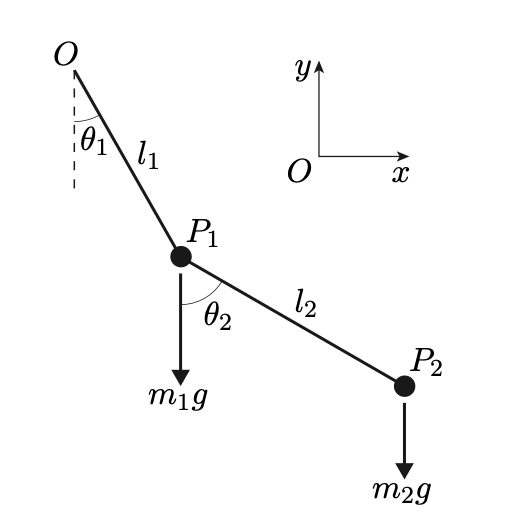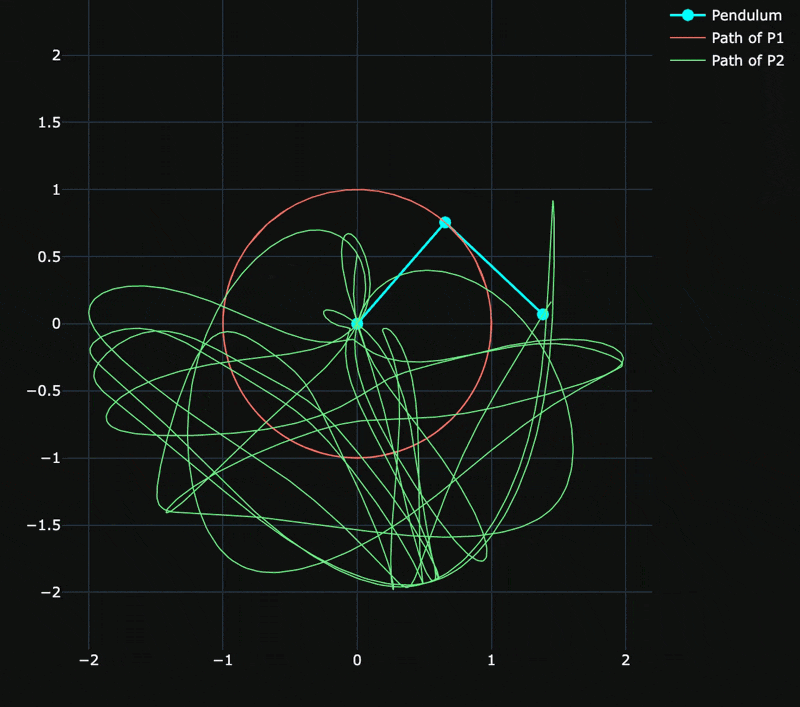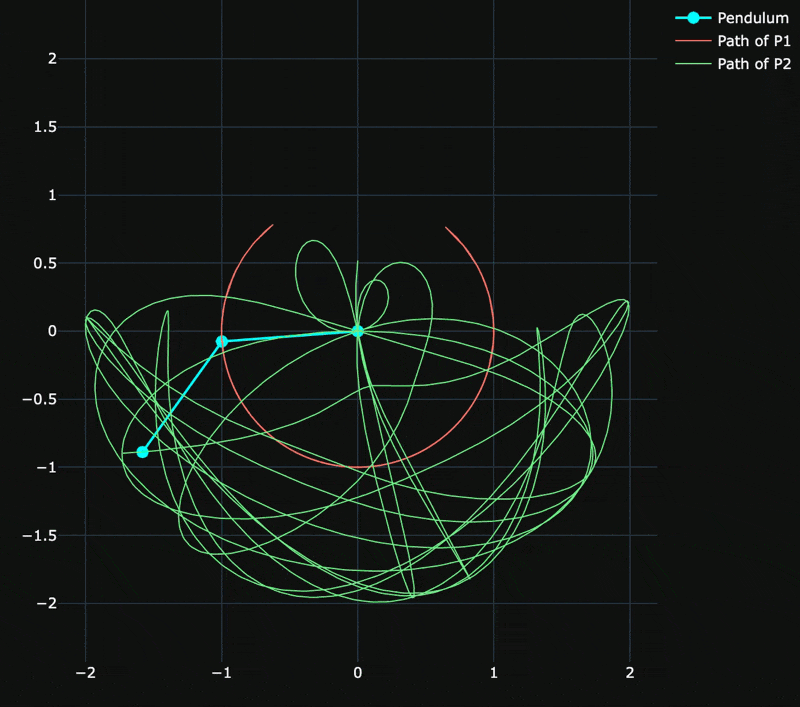The above figure shows simple pendulum suspended from another simple pendulum by a frictionless hinge.
- Both pendulums move in the same plane.
- In this system, the rods
$OP_1$ and$P_1P_2$ are rigid, massless and inextensible. - The system has two degrees of freedom and is uniquely determined by the values of
$\theta_1$ and$\theta_2$
We solve the Euler-Lagrange equations for
The result is a system of
The equations are uncoupled by letting
So
Systems illustrating periodic/chaotic behaviour are explored.
The gif below shows chaotic motion with release from rest for large initial angles
The rods
The gif below shows release from rest for large initial angles
In this simulation, the only difference is the mass distribution - uniform along the length;
$M_1=M_2=1\text{kg}$ $l_1=l_2=1\text{m}$
Update 10/01/2024: Refactored taking OOP approach
- The utilities in this file abstract the complex symbolic derivation tasks.
- This file defines the
DoublePendulumclass, encapsulating all aspects of a double pendulum simulation within an object-oriented framework. - The class allows for the selection of
simpleorcompoundpendulum models
See Repository
- Dynamically creating the trace plot on the animation
- The method I tried was computational expensive - need workaround
- Non-functioning work-in-progress code
- Quantifying chaotic behaviour.
- This will enable me to choose better example and better quantify the range of dynamics




